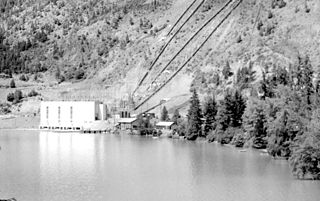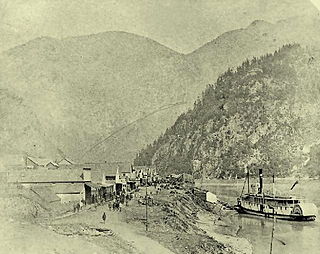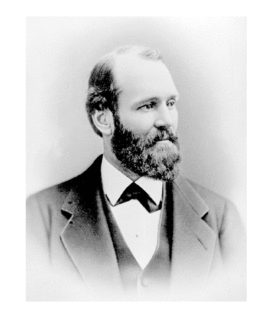This article includes a list of references, related reading or external links, but its sources remain unclear because it lacks inline citations .(July 2017) (Learn how and when to remove this template message) |
Neal "Curly" Evans (c. 1888–1945) was a freight industry entrepreneur in the Bridge River–Lillooet Country of the Interior of British Columbia, Canada. He acquired a reputation in that region for his enterprise, daring, and personality.
The Bridge River Country is a historic geographic region and mining district in the Interior of British Columbia, Canada, lying between the Fraser Canyon and the valley of the Lillooet River, south of the Chilcotin Plateau and north of the Lillooet Ranges. "The Bridge River" can mean the Bridge River Country as opposed to the Bridge River itself, and is considered to be part of the Lillooet Country, but has a distinct history and identity within the larger region. As Lillooet is sometimes considered to be the southwest limit of the Cariboo, some efforts were made to refer to the Bridge River as the "West Cariboo" but this never caught on.
The Lillooet Country, also referred to as the Lillooet District, is a region spanning from the central Fraser Canyon town of Lillooet west to the valley of the Lillooet River, and including the valleys in between, in the Southern Interior of British Columbia. Like other historical BC regions, it is sometimes referred to simply as The Lillooet or even Lillooet,.
The British Columbia Interior, BC Interior or Interior of British Columbia, usually referred to only as the Interior, is one of the three main regions of the Canadian province of British Columbia, the other two being the Lower Mainland, which comprises the overlapping areas of Greater Vancouver and the Fraser Valley, and the Coast, which includes Vancouver Island and also including the Lower Mainland.
Evans was born in the Dakotas and came to the Cariboo as a boy. His nickname derives from the curly, dark hair of his youth ("a mass of raven locks"), although later in life he was balding. His freighting career spanned the age from jerk-line times on the Cariboo Road to bush piloting, instructed by no less than Ginger Coote, who pioneered flying in the Bridge River and Fort St. James areas of BC. Around 1910, Evans was employed by the BC Express Company (formerly Barnard's Express) out of Ashcroft, British Columbia. He was also, like many others in this region, a cowboy as well as a miner.

Barnard's Express, later known as the British Columbia Express Company or BX, was a pioneer transportation company that served the Cariboo and Fraser-Fort George regions in British Columbia, Canada from 1861 until 1921.

Ashcroft is a village in the Thompson Country of the Interior of British Columbia, Canada. It is 30 kilometres (19 mi) downstream from the west end of Kamloops Lake, at the confluence of the Bonaparte and Thompson Rivers, and is in the Thompson-Nicola Regional District.
As gold extraction began to boom into the Bridge River Goldfields, Evans was one of the many who started freighting operations to supply the mines and prospectors in that area and earned a reputation for reliability in delivering freight despite all obstacles, including floods, mountain slides and blizzards. With the development of a proper road into the Upper Bridge River from Shalalth on Seton Lake, Evans expanded his personal operation into a fleet of trucks and passenger vehicles, eventually becoming the owner of one of the largest transportation firms in the BC Interior, most of its business derived from Bralorne Mine and other Bridge River mining camps, and also from the construction of the Bridge River Power Project. Although never seen to fruition, Evans intended his company to expand into air freight.

Shalalth, pop. c. 400, is one of the main communities of the Seton Lake Band of the St'at'imc (Lillooet) Nation and location of the two main powerhouses of the Bridge River Power Project.

Seton Lake is a freshwater fjord draining east via the Seton River into the Fraser River at the town of Lillooet, British Columbia, about 22 km long and 243 m in elevation and 26.2 square kilometres in area. Its depth is 1500 feet.

The Bridge River Power Project is a hydroelectric power development in the Canadian province of British Columbia, located in the Lillooet Country between Whistler and Lillooet. It harnesses the power of the Bridge River, a tributary of the Fraser, by diverting it through a mountainside to the separate drainage basin of Seton Lake, utilizing a system of three dams, four powerhouses and a canal.







